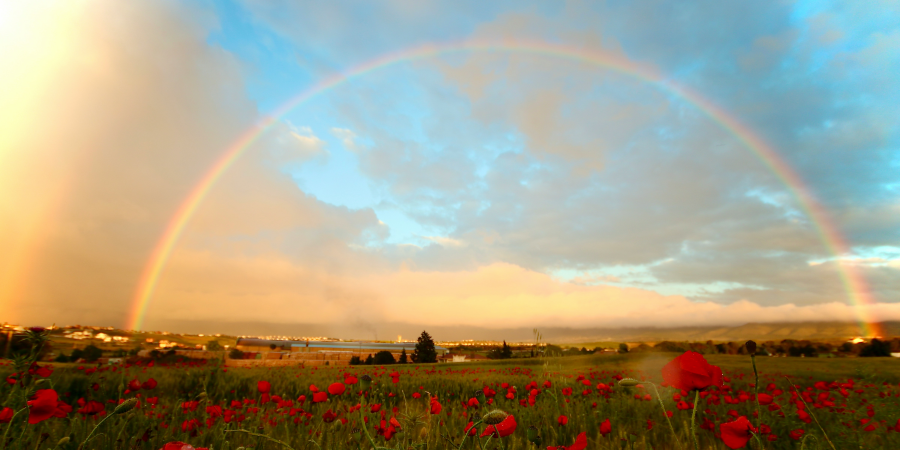

A rainbow is an optical phenomenon in which a continuous spectrum of light appears in the sky as a result of light refraction, internal reflection, and dispersion in water droplets.The rainbow appears as a circular arc with multiple colors.Sunlight-induced rainbows are always seen in the area of the sky that faces the sun. There are numerous ways that water in the air can produce rainbows. They include spray, mist, and airborne dew in addition to rain.
Circles can be seen in rainbows. But typically, all that is visible to the spectator is an arc centered on a line that runs from the Sun to their eye, generated by light raindrops above the ground [3].
The arc of a primary rainbow has violet on the inside and red on the outside. The reason for this rainbow is that light is refracted as it enters a water droplet, reflects back inside on its rear, and then refracted once more as it exits the droplet.
A double rainbow has a second arc that appears outside the first one, with red on the inner side of the arc and the colors in the other order. This results from light entering the droplet and reflecting twice inside of it before leaving it.
Visibility :
When water droplets are suspended in the atmosphere and sunlight is illuminating the viewer from below at a low angle, a rainbow can be seen. Rainbows can therefore typically be seen in the morning in the western sky and in the early evening in the eastern sky. When the spectator is in a location with a clear sky facing the Sun and half the sky is still dark with precipitation clouds, the most amazing rainbow displays occur. The outcome is a bright rainbow that stands out against the background of darkness. It is frequently possible to see the larger but fainter secondary rainbow under such favorable visibility conditions. It appears with the colors arranged in reverse and is located roughly 10° outside of the main rainbow.
The rainbow effect is frequently observed close to fountains or waterfalls. Furthermore, on a sunny day, the effect can be produced artificially by releasing water droplets into the atmosphere. Strongly lunar-lit nights are rare occasions when a moonbow, lunar rainbow, or nocturnal rainbow can be seen. Due to the poor color perception of humans in low light, moonbows are frequently mistaken for white.
Attempting to capture an entire rainbow's semicircle in a single frame would necessitate an 84° field of vision, which is challenging to do. A wide-angle lens with a focal length of 19 mm or less would be needed for a 35 mm camera. Using a sequence of overlapping frames, photographs of the full arc and even subsidiary arcs may be made quite easily, thanks to software that can stitch many images together to make a panorama.


